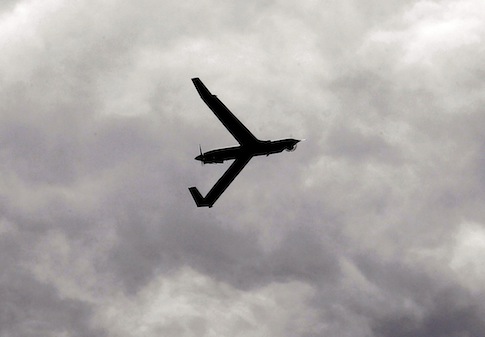Technological improvements have turned drones from hobbyist toys to potential weapons against the United States, according to a new report from the Center for A New American Security.
The report, released Wednesday, describes the threat that the popularization and evolution of drones pose.
"For a few hundred dollars, anyone will be able to purchase a small hobby drone with the ability to perform aerial surveillance or deliver payloads of a few kilograms at ranges up to a few kilometers," CNAS associate fellow and author Kelley Sayler wrote. "Eventually, however, hobbyist drones will be capable of GPS-independent precision navigation, including indoors. In large numbers, they could be used for saturation swarming attacks against an array of government, military, and civilian targets.
These hobbyist drones pose the biggest threat due to their ease in operating, inexpensive cost, small size, and availability to the most amount of people. These factors make them easy to incorporate into many criminal and terror activities.
"Though most commercial off-the-shelf drones have relatively short range and limited payload capacity, they have been successfully used to smuggle drug packages and could be modified to carry explosives, firearms, or other damaging objects instead," Sayler writes. "As this technology continues to proliferate, simple weaponized drones will be increasingly within the reach of virtually any state and many non-state actors. Already, non-state actors such as Hamas, Hezbollah, the Islamic State of Iraq and Syria (ISIS), and Libyan rebel groups have used drones to conduct tactical surveillance."
Hobbyist drones are the largest of the four types, including midsize military and commercial drones, large military specific drones, and stealth combat drones. Each of these types of unmanned weapons have the capability to deliver weapons, attack with ballistics or drop bombs, and perform surveillance operations from a distance.
While hobbyist drones are available to the general public, the difficulty to acquire them increases substantially from one category to another, with the U.S. being the only country in possession of stealth combat drones.
More than 90 nations and non-state groups are known to operate drones, including at least 30 countries that either operate or are developing armed drones.
According to Sayler, the popularization of drones in commercial and military circles is inevitable, but the United States should take steps to safeguard the public as the technology develops.
"Low-cost drones may lead to a paradigm shift in ground warfare for the United States, ending more than a half-century of air dominance in which U.S. ground forces have not had to fear attacks from the air. It will be vital for the United States to consider the implications of this new strategic landscape and prepare for the challenges of a world of proliferated drones."
